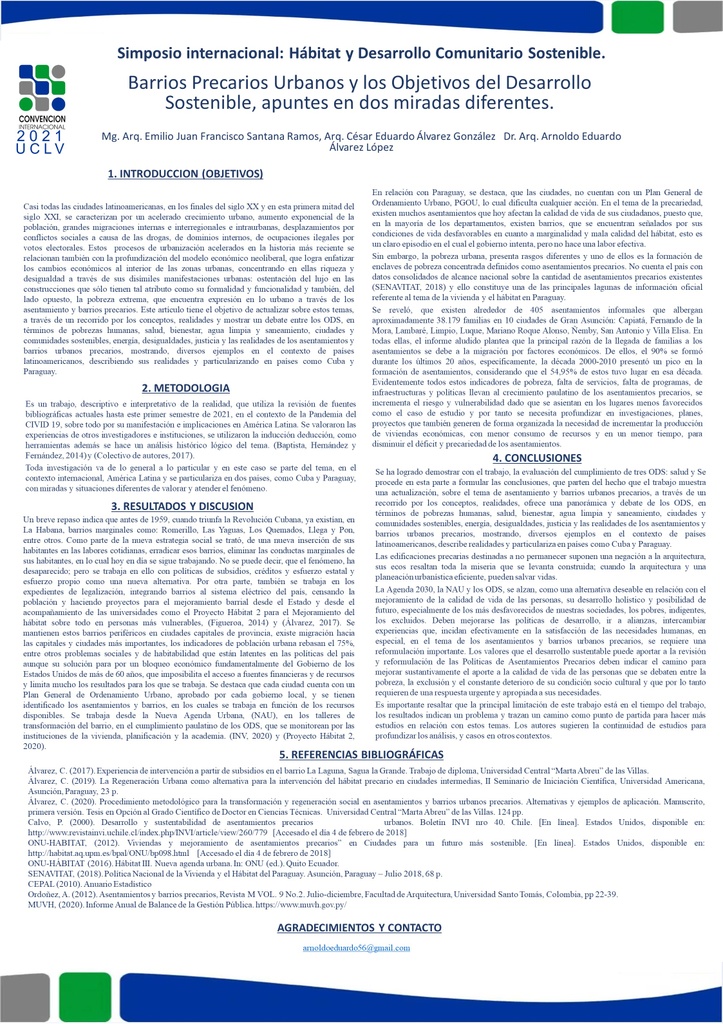Executive Secretary

Simposio Internacional Hábitat y Desarrollo Comunitario Sostenible
HAB-COM 2021

n 2015, the United Nations (UN) approved the 2030 Agenda and with it its 17 Sustainable Development Goals (SDGs). The precarious urban neighborhoods, constitute the expression of a socio-economic phenomenon that has been increasingly worsening in the world, especially in Latin America, where it is estimated that there would be about 200,000,000 people in the range of poverty, that is, almost 38% of the total population of the region, would be living in precarious conditions (Alvarez, 2019). The main manifestation of the problem, are the precarious neighborhoods; with a level of "legality and urbanism" gradually increasing, but, in no case acceptable. The objective of this work is to show perspectives of the problem in two countries, Paraguay and Cuba, and a debate between the SDGs, in terms of human poverty, health, well-being, clean water and sanitation, sustainable cities and communities, energy, inequalities, justice and the realities of slums. It is a descriptive and interpretative research of reality, which uses the review of bibliographic sources. It is concluded that beyond the assumption of slums as legalized poverty, the debate indicates its realities, which highlight the non-compliance with the SDGs.
En 2015, la Organización de las Naciones Unidas, (ONU) aprobó la Agenda 2030 y con ella sus 17 Objetivos del Desarrollo Sostenible, (ODS). Los barrios urbanos precarios, constituyen la expresión de un fenómeno socio económico que se ha ido agravando cada vez más en el mundo, especialmente en América Latina, donde se calcula que existirían cerca de 200.000.000 de personas en el rango de pobreza, es decir, casi el 38% de la población total de la región, estaría viviendo en condiciones de precariedad (Álvarez, 2019). La principal manifestación del problema, son los barrios precarios; con un nivel de “legalidad y urbanismo” paulatinamente mayor, pero, en ningún caso aceptable. Este trabajo tiene el objetivo de mostrar miradas del problema en dos países, Paraguay y Cuba y un debate entre los ODS, en términos de pobrezas humanas, salud, bienestar, agua limpia y saneamiento, ciudades y comunidades sostenibles, energía, desigualdades, justicia y las realidades de los barrios urbanos precarios. Es una investigación descriptiva e interpretativa de la realidad, que utiliza la revisión de fuentes bibliográficas. Se concluye, que más allá del supuesto del barrio precario, como una pobreza legalizada, el debate indica sus realidades, que ponen en evidencia el no cumplimiento de los ODS.
About The Speaker

Arq. Emilio Juan Francisco Santana Ramos




